The best smart bikes are more effective and realistic than ever, with great power accuracy, adjustable positions and features such as simulated gradients.
If you’re growing to love cycling in the great indoors, whether that's to beat bad weather or make the most of limited time, a smart bike provides a dedicated training setup designed for the task in hand.
Unlike the best smart trainers, a smart bike packages up everything you need to ride indoors in one bundle. You don't need to worry about using your carbon fibre bike on the turbo trainer, nor do you need to be concerned about the increased wear and tear of expensive components.
On the flip side, smart bikes are a significant investment and require the space for a dedicated indoor training space.
Here's BikeRadar's pick of the indoor bikes we've tested, plus our buyer's guide on what to look for if you're thinking about splashing out on a smart bike.
Editor's note: this list was updated on 14 April 2025 with information on how we test indoor bikes.
Best indoor bikes in 2025
Wahoo Kickr Bike
SQUIRREL_TEXT_13084342
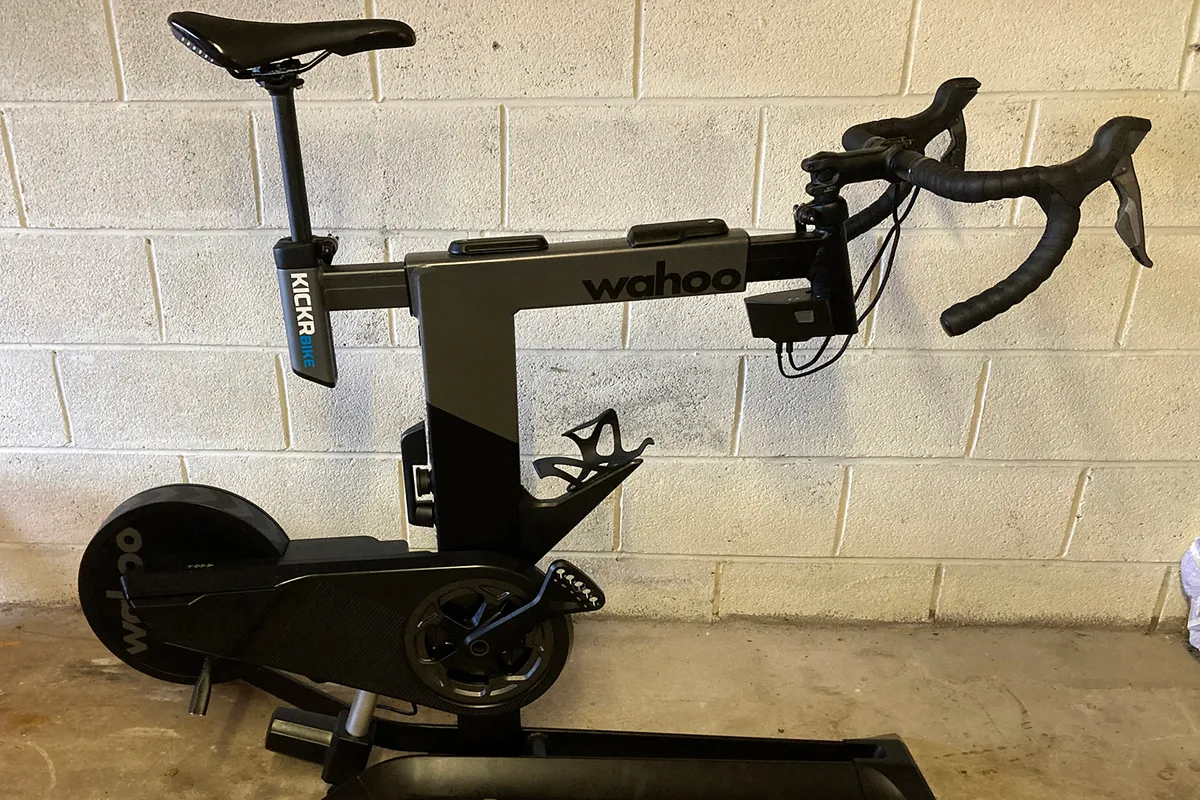
- £4,000 / $4,000 / €4,000 / AU$6,5000 as tested
- Pros: Realistic ride; wide compatibility (including Zwift and TrainerRoad)
- Cons: Broad top tube
The second-generation Wahoo Kickr Bike provides an incredibly realistic ride, with plenty of adjustability, accuracy and reliability justifying the high price tag.
Wahoo has added WiFi connectivity to the latest Kickr Bike. Our tester experienced no connection dropouts during testing despite racking up hundreds of kilometres on Wahoo X.
The real-time gradient change function is a standout feature of this bike. Whether tilting forward or back, this is a smooth process that adds to the experience and edges virtual riding closer to reality.
Wahoo claims the bike's power measurement is within 1 per cent accuracy. Our tester found its readings matched his heart rate and wattage data from using the Wattbike Atom.
The large flywheel and motor combine for a quiet ride, with only a gentle hum emanating from the static bike.
The only real downside to the Wahoo Kickr Bike is the wide top tube, which is broader than an outdoor bike and could cause issues if you have wider thighs.
SQUIRREL_13084342
Wattbike Atom (Next Generation)
SQUIRREL_TEXT_13121542
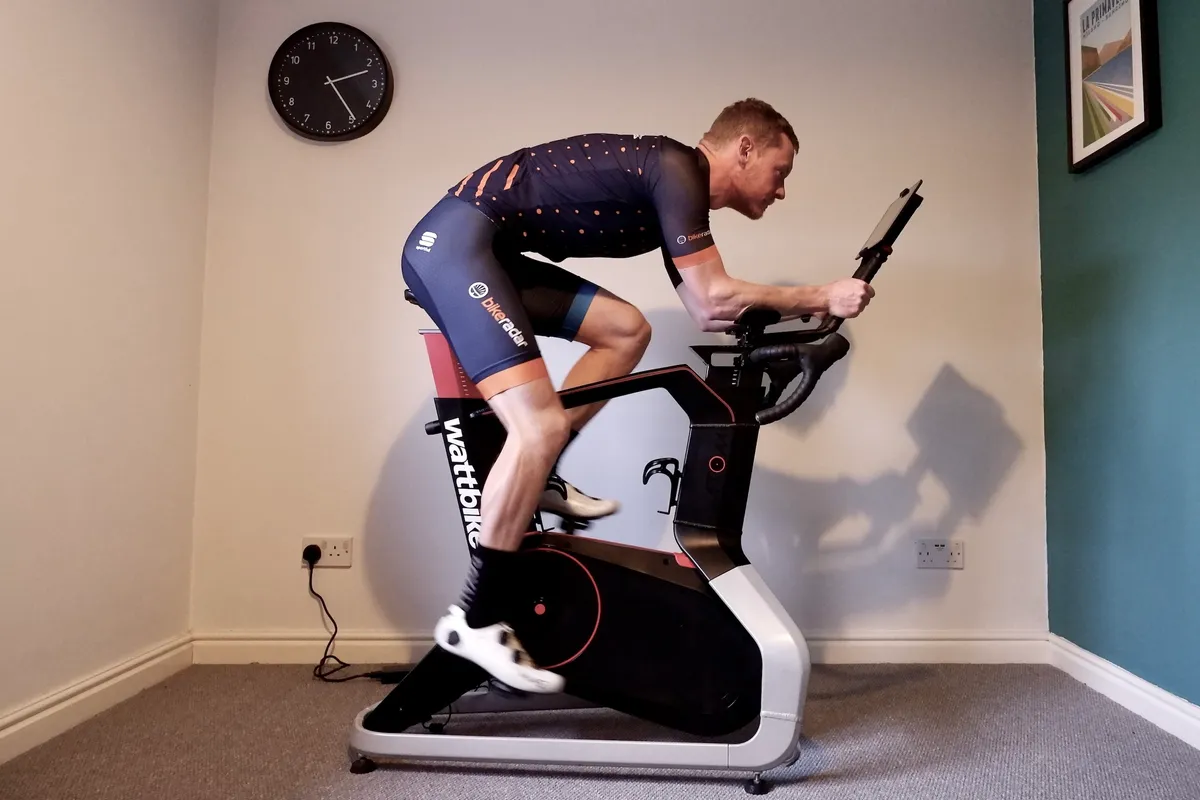
- £1,899 as tested
- Pros: Easy to set up and adjust with good connectivity
- Cons: Slightly noisy
The Wattbike Atom is easy to set up and get connected to your computer, tablet (for which there's integrated support) or smartphone, as well as third-party indoor training apps, including Zwift. There are plenty of training routines available in the accompanying Wattbike app, too.
It's easy to change saddle height, handlebar height and a number of bike fit adjustments, but crank length is fixed at 170mm. Although it's heavy, you can roll the Atom around on its small front wheels.
With a chain drive for the resistance unit, there's an outdoor bike feel to the Atom, although that does generate a bit more noise than its competitors. The drop handlebar at the front mimics the setup of a road bike but, with 22 sequential gears, set ratios and no brake levers, that's where the comparison ends.
The Atom generates loads of data on power output, pedalling smoothness and other metrics, although while doing HIIT sessions, we found the lag when changing resistance sometimes made for awkward transitions, and the ERG mode was frustrating.
SQUIRREL_13121542
Wattbike Proton

- £1,795 / $2,499 / AU$3,749 as tested
- Pros: Plenty of adjustability; quiet and smooth pedalling; easy app connectivity
- Cons: Gear shifters could be more substantial; not the stiffest platform
The Proton provides good functionality with a compact and smart-looking design that is easy to set up.
With plenty of adjustability, James found it quick and easy to replicate a similar position to that of his road bike.
He found the lack of crossbar to reduce the stiffness of the Proton compared to the Atom during out-of-the-saddle efforts.
The trainer is easy to connect to third-party apps, and James liked Wattbike's Hub workouts, which are free to access.
Also consider…
This indoor bike scored fewer than 4 out of 5 stars in our review but is still worth considering.
Tacx NEO Bike Smart
SQUIRREL_TEXT_13081198
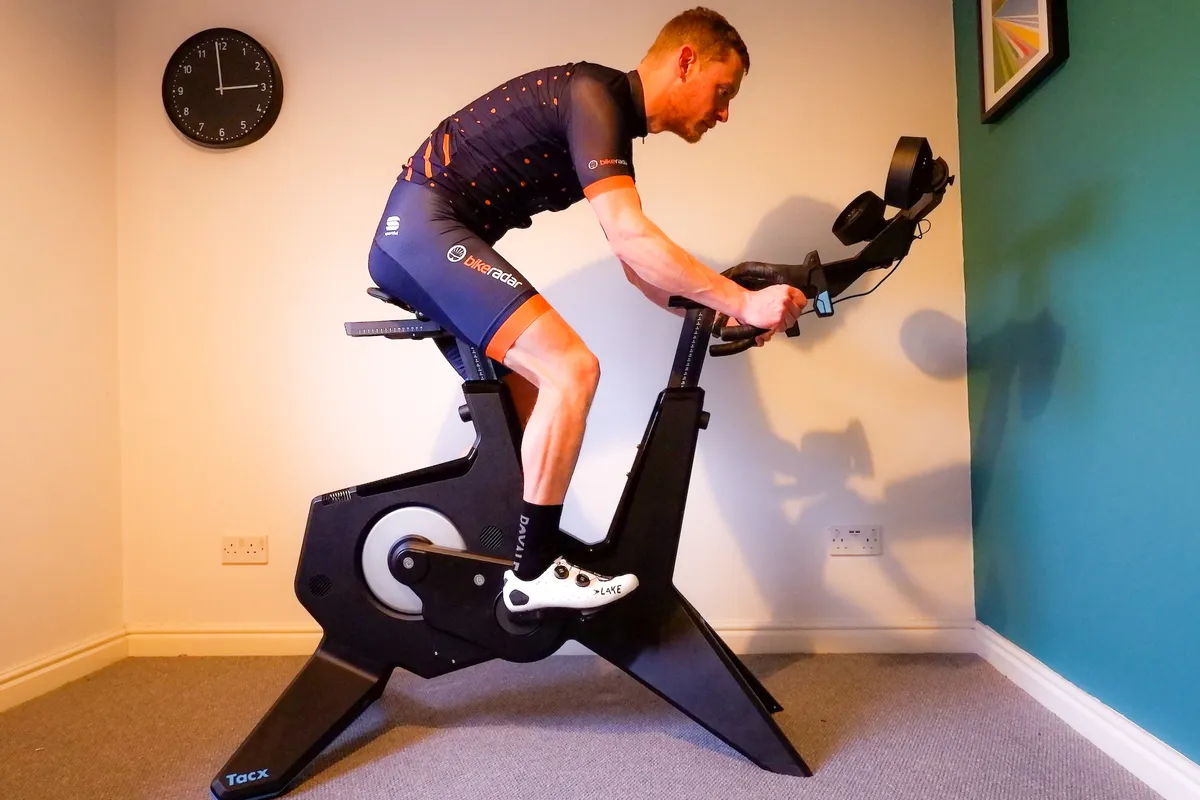
- £2,299 / $3,200 / €2,600 / AU$5,000 as tested
- Pros: Works well in Normal mode
- Cons: Tricky adjustment
The step-through frame of the Tacx NEO Bike Smart makes getting on and off easy and there's an extension for your tablet, which also includes a couple of fans and the bike's display.
There's lots of adjustment possible, including crank length, although it's a bit fiddly to get your setup right. You can adjust the gear ratios to match your outdoor bike; the Shimano-like shifters were awkward to use, though. We found we had to supplement the small, built-in fans to get effective cooling.
The Tacx NEO doesn't tilt like the Wahoo Kickr Bike, but the Road Feel, Gear Feel and Descent Simulation features add to the ride realism.
In Normal mode, the NEO Smart's resistance changes were realistic through the testing period, but in ERG mode, the bike sometimes struggled to maintain the power required by Zwift.
SQUIRREL_13081198
How we test indoor bikes

We test indoor bikes in our front rooms and pain caves to see how they perform in their usual setting.
Our testers will spend long periods training on the indoor bikes to make sure they have enough time to identify all their strengths and weaknesses.
Ultimately, our indoor bike reviews are based on the following criteria:
- Power accuracy – how accurate is the power data?
- Connectivity – how easy is it to connect the indoor bike to other accessories?
- Adjustment – can you adjust the indoor bike to match your riding setup?
- Ride quality – is the indoor bike smooth and does it make a lot of noise?
- Practicality – is the indoor bike easy to live with?
- Value for money – are you getting a good deal?
Why you can trust BikeRadar
BikeRadar has been an authority on bikes and cycling tech since its inception in 2007, delivering the world’s best riding advice.
We have experts testing all types of bikes, parts, clothing and accessories, from road, mountain and gravel bikes to commuting, bikepacking and electric bikes.
Our reviews are always editorially independent – with no exceptions. Our reviewers comprehensively test all products in the real world, always reflecting on performance, value and the wider market when delivering their verdicts and review ratings.
We have more than 15,000 product reviews available at your fingertips, as well as expert buying, maintenance, training, skills, health and fitness advice.
Our annual Bike of the Year test is an industry benchmark and the BikeRadar team consists of some of the most experienced riders and testers in the business.
Other options
The smart bike market has grown significantly in the past couple of years. We haven't tested these indoor bikes, but here's a range of alternative options.
Peloton
SQUIRREL_TEXT_13203733
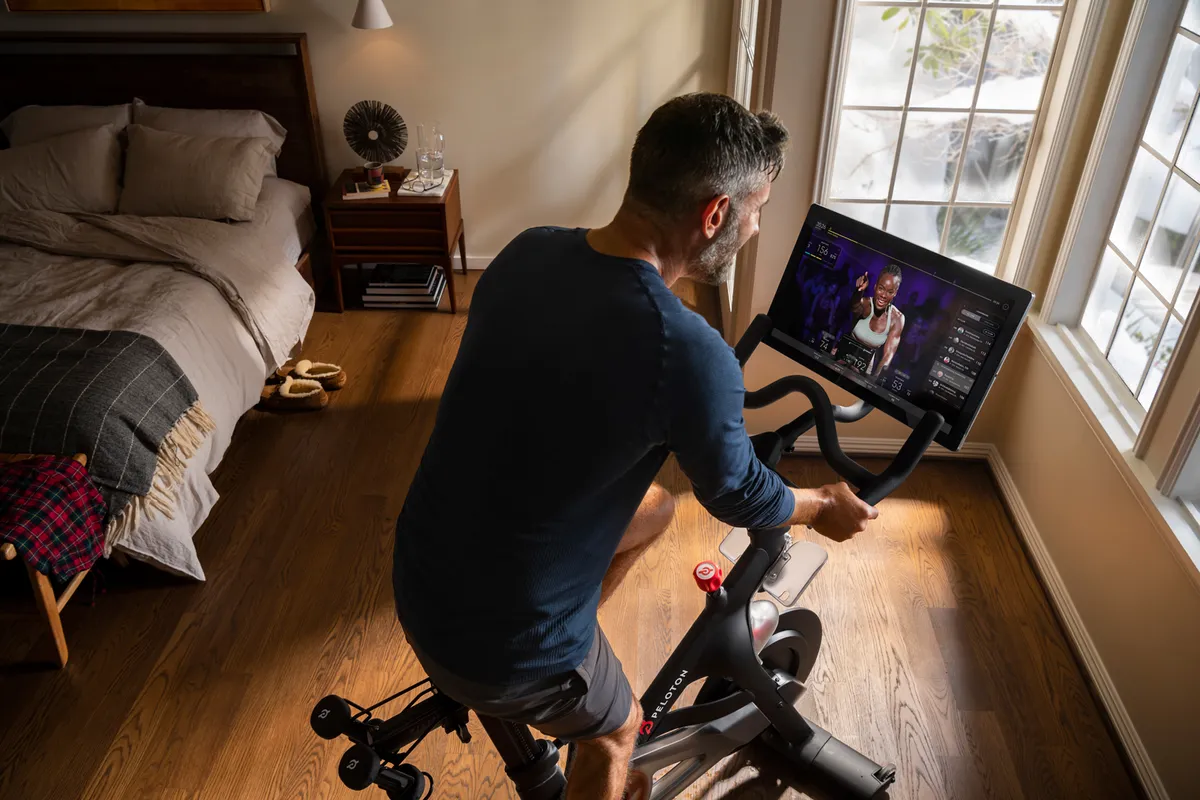
Peloton’s exercise bike is another indoor training solution, although unlike the other options featured here, this one isn’t really designed specifically with cyclists in mind. It’s more of a replacement for the spinning classes at your gym than support for structured cycling workouts.
Unlike most smart bikes, power is an estimate from an algorithm based on cadence and resistance – there's no strain gauge built into the bike.
There is, however, a built-in screen to pipe video of live daily classes to you, as well as access to Peloton’s library of workouts. There's also a monthly fee, though that gives you access to community features such as leaderboards, music and playlists.
Peloton is a closed system, so you won’t be able to hook it up to third-party training apps.
You can read our Zwift and Peloton comparison to find out more.
SQUIRREL_13203733
TrueKinetix TrueBike

The TrueBike is a neat-looking option from Dutch brand TrueKinetix.
Priced at €3,250, the company says it’s designed to offer a realistic ride feel, with an algorithm that takes into account factors including your weight.
Its flywheel-free design will provide resistance of up to 1,500 watts and simulate gradients of up to 15 per cent up or down, with 22 gears and connectivity to Zwift and other training apps.
SRM SmartIT
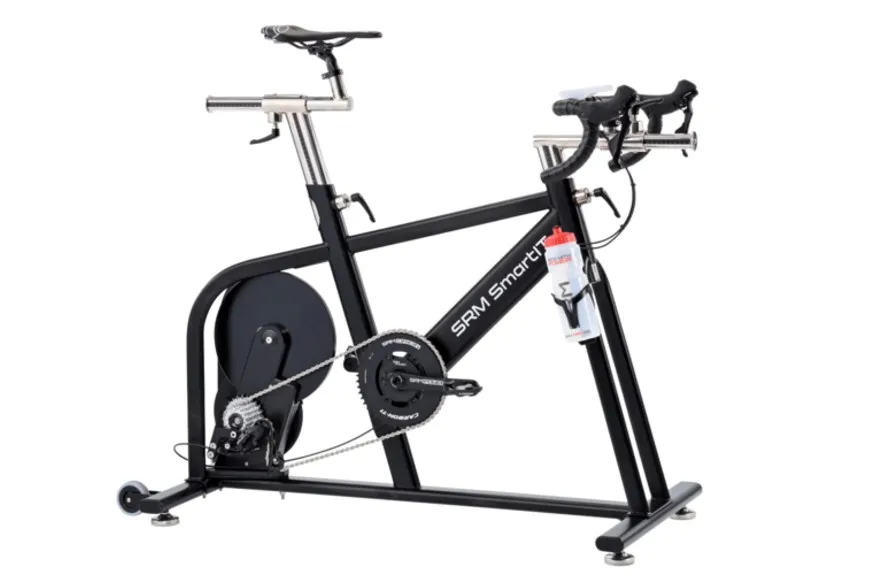
If you’ve got deep pockets and have become accustomed to hunkering down in your bunker, there’s the SRM SmartIT.
Unlike most of its competitors, the SmartIT runs off a regular drivetrain with 11-speed shifting courtesy of Shimano 105 components. Resistance is controlled via a handlebar-mounted remote, plus it has wireless connectivity for use with third-party software. SRM says the SmartIT can simulate up to 1,400 watts.
It's a suitably spendy option from the maker of the pros’ favoured power meter, and it’s fair to say the design doesn’t quite look as sleek as other options we’ve listed here.
It does, however, incorporate SRM’s Origin power meter, which the brand says has an accuracy of +/- 1 per cent. That, however, means crank length is fixed.
The 65kg weight and stainless steel frame mean you’ll probably want a home gym to keep the SRM in – but you’ve got that already, haven’t you?
Buyer's guide to indoor bikes
What does an indoor bike offer?

Unlike the spin bikes you might see in a gym, the latest generation of smart bikes are designed with dedicated cyclists in mind. You can expect accurate power measurement, a highly adjustable position and variable (and automatically controlled) resistance to give you the best indoor training experience.
Whereas an indoor exercise bike will usually have limited manual adjustability to resistance, indoor smart bikes use similar tech to smart trainers and are designed to offer a realistic, road-like feel when pedalling.
They will measure your power output and, if you want them to, automatically adjust resistance, whether that’s to match the incline of a virtual road on Zwift or so you hit the required wattage in a structured workout.
The best indoor bikes will offer lots of adjustment, too, including saddle height and fore/aft, handlebar position and even crank length, enabling you to replicate the position of your regular bike. That adjustability will also allow multiple members of the same household to use the bike.
Do you have the space?
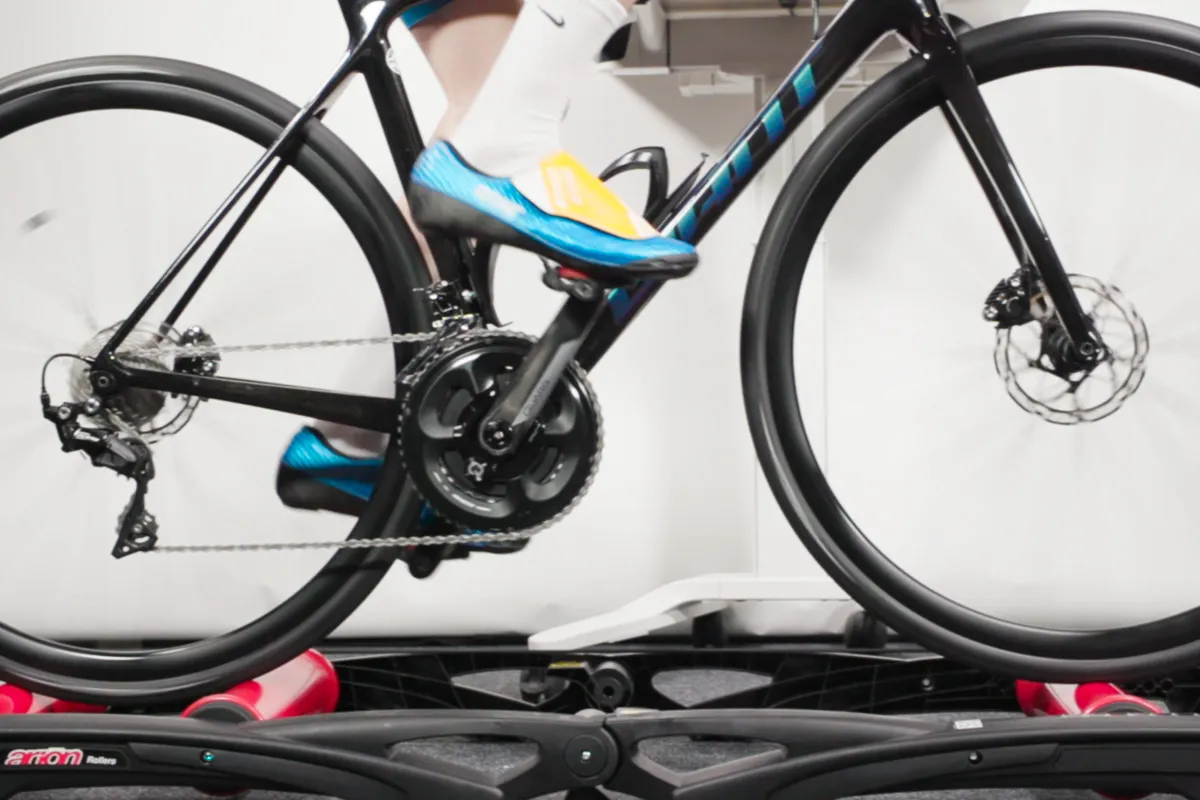
Unlike most turbo trainers or rollers, which fold down for storage, smart bikes are a permanent fixture.
What’s more, in order to handle a cyclist riding at full tilt or out of the saddle, smart bikes are usually heavy and have large bases, so they’re not something you will want to lug around. Nor will they fit in the bottom of a cupboard when not in use.
With that in mind, make sure you’ve got the space for a smart bike, with an electricity supply close by so it’s set up ready to ride.
Plus, all that tech is pricey – a dedicated smart indoor bike will set you back at least four figures, and a lot more for the latest crop of machinery.
The flip side, of course, is a dedicated, high-tech training tool ready for you to jump on at any point.
Connectivity to third-party training apps
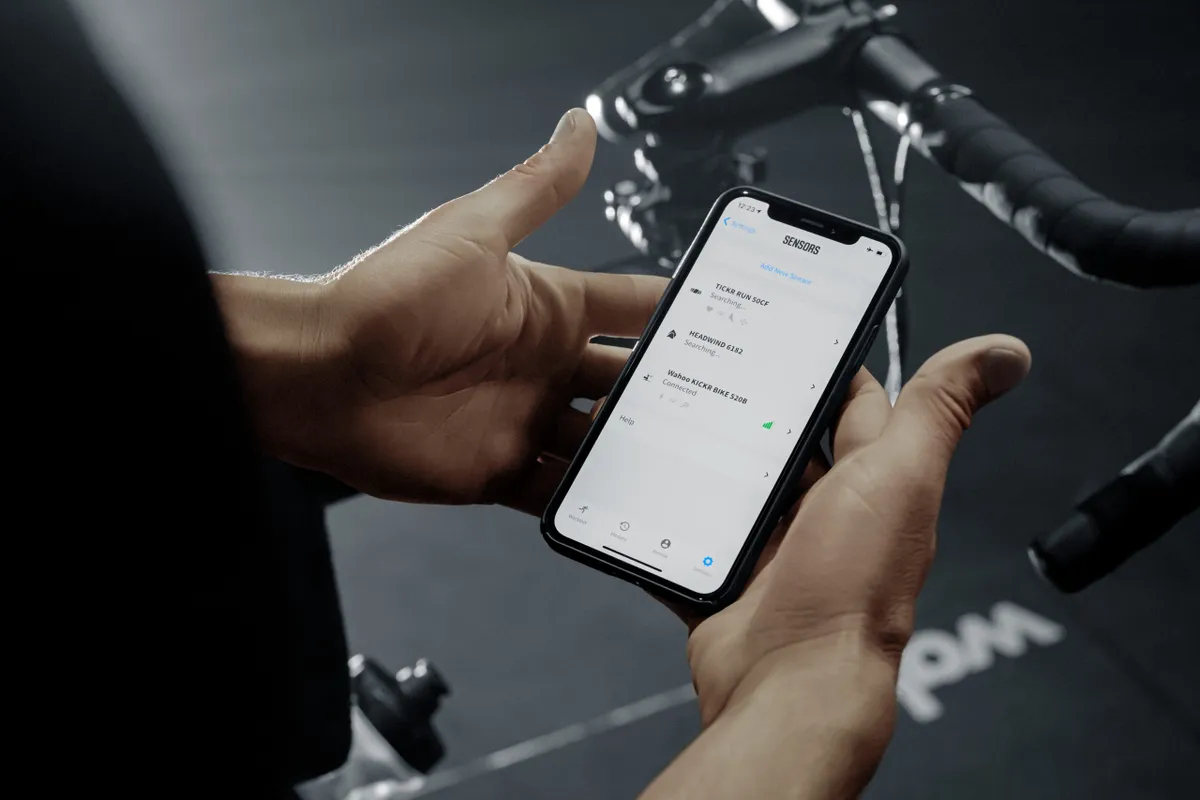
Most smart bike brands offer workouts developed in-house, as well as Bluetooth and/or ANT+ connectivity to third-party apps such as Zwift, Wahoo SYSTM, and TrainerRoad, alongside other free indoor cycling apps.
The best indoor cycling apps provide a much more engaging and immersive indoor ride experience, often with a video or virtual simulation of outdoor terrain. They’ll also enable you to challenge your mates, embark on a training plan or simply ride against others.
